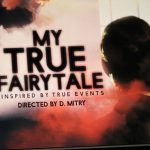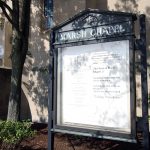Right-brained or left-brained, creative or scientific, imaginative or analytical. Individuals are constantly categorizing their interests and strengths in polarized spheres. But these disciplines aren’t as separate as one may think, and understanding of one can be advantageous in the practice of the other.

Professor Lee Roberts teaches “The Physics in Music,” a course in the College of Arts and Sciences offered primarily for liberal arts and music students at Boston University, that covers properties of musical acoustics such as sound waves and frequencies. He said those are the very basics of what underlies all music.
“Sounds are essentially vibrations coming toward you, waves coming toward you,” Roberts said, “that contain this information for the sound that was made from the instrument.”
Roberts said it is helpful for musicians to understand how their instrument works and its limitations in order to be able to work around a potential issue, comparing it to understanding the mechanisms of a car.
“Understanding why your instrument works the way it works I think is an important tool in understanding how to optimize what you get out of it,” Roberts said. “You don’t have to know anything about how a car works to get in and drive it. But if it’s having a problem, it really helps if you have some idea rather than going to the mechanic and saying it doesn’t work.”
While individuals can have varying likings for types of music, Roberts said all listeners seek out a sense of order in the the chords and composition of the piece they’re listening to.
“The listener looks for some kind of order in music,” Roberts said. “[They] like a piece with a beginning, a middle and an end.”
Science ignorance is a major problem in society, Roberts said, and one of the goals of the course is to encourage students to see applications of these concepts in the larger world.
“We have to learn the basics of physics in order to talk about musical systems in any kind of a reasonable, scientific way,” Roberts said. “[I] push my students to think critically about the material and how this basic physics applies to everything around them.”
However, Bayla Keyes, as an associate professor of music who works with violin performance students, said she would not consider violinists scientists.
“If you understand some of the things about the rules of the overtone series,” Keyes said, “you can play better it’s possible to play without any knowledge of that.”
Musical notes in perfect intervals combine to create sounds Keyes described as warm and peaceful.
“When you play two tones together that are related, and if they are related in a certain way, then their overtones interact and it makes a more beautiful sound,” Keyes said. “Music is also full of dissonance, and a lot of what a work of music will do is introduce dissonance and then resolve it to constant.”
Keyes said there are many details in the way the violin can be held and played that change the tone and overall feel of the sound. For example, she said a tight grip on the bow results in an “edgier” sound, and the placement of the bow can create a more diffused or more bright sound.
“I’m terribly interested in getting my students to make the widest range of sound,” Keyes said. “To learn what constitutes a sad sound, what is an upset sound versus a peaceful sound, what combination of all of these factors produces that emotion so clearly that everybody listening to it will respond.”
Using certain sounds to convey certain emotions, Keyes said, has been practiced by humans for centuries. She said the ancient Greeks used an interval now referred to as the tritone, or “Devil’s interval,” to create a sense of uncomfort.
“They would play with the idea it would drive the person listening insane,” Keyes said. “The dissonance that this interval creates is so unpleasant dislikes hearing it.”
Justin Casinghino, a lecturer in Composition and Music Theory, who teaches both doctoral composers and first-time music students in the courses “Composing with Electronic Sounds and Computers 1&2.” He said the course involves investigating how sound works and how to digitally record and manipulate sound.
“It’s an important end of composition right now, to be able to work on electronic music, to understand how to record it, think about it,” Casinghino said. “For some of those students new to it, just how to listen to the world around you.”
Casinghino said he appreciates that in making electronic music, a composer can create new sounds with certain feelings that an instrument can’t achieve.
“One of the big differences in electronic music is we’re not just using sounds that already exist,” Casinghino said. “I can really use computers to make the sound something that’s never been heard before.”
Casinghino said he likes to think of every sound around him as an “instrument.”
“If you look at something like a violin, a bow is being pulled across the string, which creates a friction-based vibration, Casinghino said. “The green line stopping and the break squeaking is also a friction-based vibration.”
Jackie Bensen, a sophomore studying both violin performance in CFA and psychology in the College of Arts and Sciences, said her majors work hand-in-hand in understanding the way music works.
“I tell people that I do violin and psychology and they automatically assume that the violin is a fun extracurricular kind of thing, but I treat it as … what I want to do professionally,” Bensen said. “It can be a little demeaning to just call [music] an art because it’s a lot of people’s work … It has to be perfect, too, like a science.”




